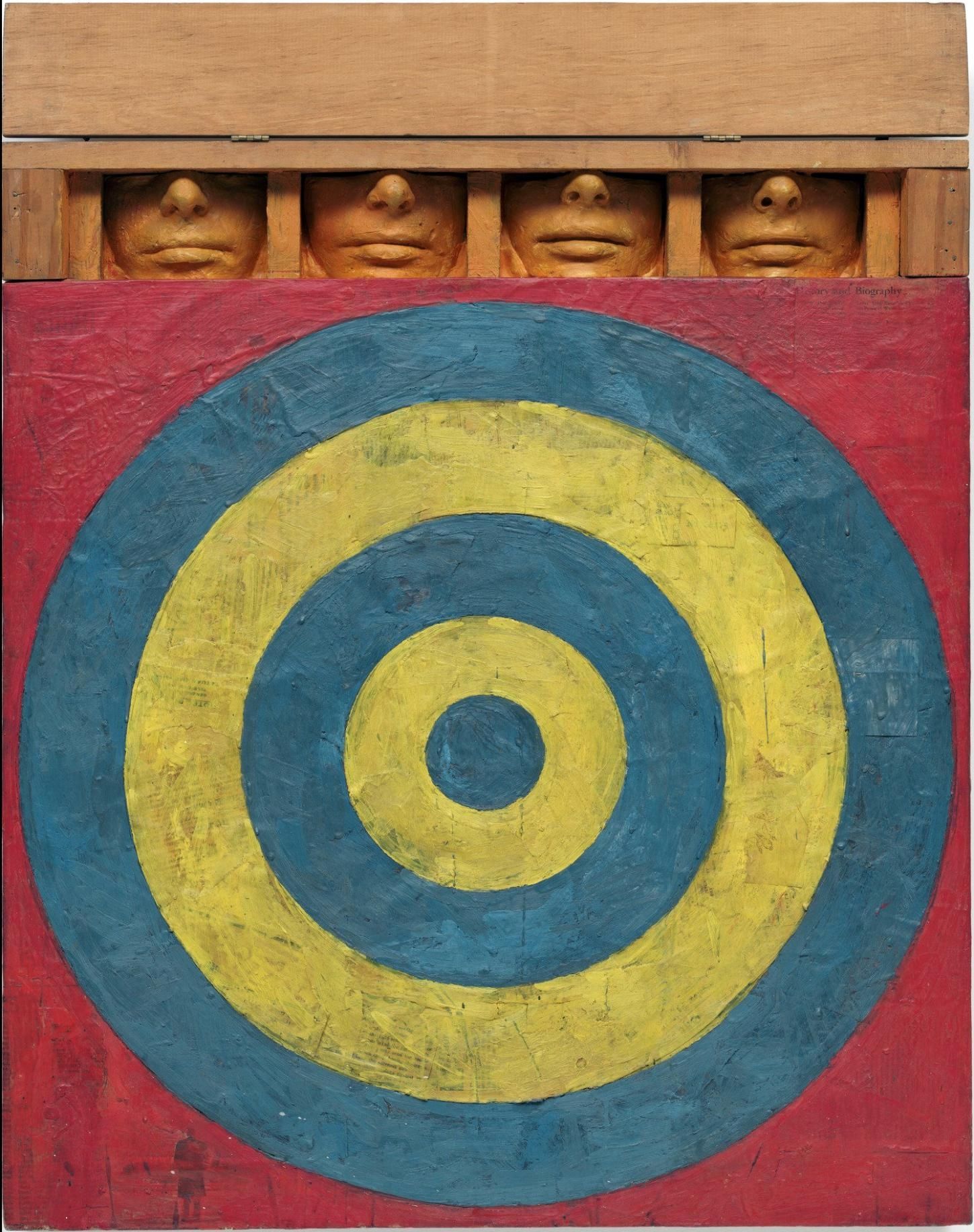

All of Johns prints are original prints as Johns saw printmaking as a distinct medium to create artworks. Many of Johns’ prints were lithograph prints though he also created etching prints, woodcut prints and drypoint prints. Johns produced many prints, his first prints being created in the 1960s.

In 2020, there were two major Jasper Johns museum print exhibitions Jasper Johns: 100 Variations On a Theme at The Museum of Fine Arts, Houston - an exhibition of 100 unique prints created over ten days and An Art of Changes: Jasper Johns Prints, 1960–2018 at the Walker Art Center, Minneapolis, a printmaking retrospective of 90 Johns prints in intaglio, lithography, woodcut, linoleum cut, screenprinting and lead relief. Yet, by using popular images, modern materials, and the work still taking on an expressive quality, John’s work can be understood as Neo-Dadaist – a period in art that was understood as an intermediary between Abstract Expressionism and Pop Art. This can be understood as influenced by the Abstract Expressionists (like Jackson Pollock).

While his use of American imagery (Ballatine Ale Cans) and repetition (Three Flags) can be related to the Pop Art movement, which portrayed popular culture and objects that were a part of everyday life, his style in which he painted had more of an expressive quality (for example his Crosshatch series, often titled by numbers such as #4, #6).
#Jasper johns artwork trial
Johns has produced more than 450 limited print editions over the course of seven decades, in addition to a large number of one-of-a-kind trial proofs, monotypes, hand-colored proofs, etc. In the mid 1950s Jasper Johns, one of Americas foremost artists, began painting flags, targets, alphabets, maps, and numbers at a time when abstract. The realm of prints has undergone a revolution thanks to Johns' creative contributions to screenprinting, etching, linocutting, and lithography. Johns believes that printmaking stimulates innovation since it makes it simple for him to go in new directions. Johns, who is renowned for his exquisite paintings, is considered to be one of the best printmakers in history. He has received international acclaim for his work in painting, drawing, sculpture and printmaking and received the Presidential Medal of Freedom in 2011, the first painter to receive this award since 1977.Jasper Johns, the American born Neo-Dadaist and Pop artist is often cited for his infamous series, the “Flag” and “Target." In both groups of works his key traits are portrayed: the use of American imagery, painterly brush strokes, and repetition. By the mid-1950s, Johns began to develop an essential bridge between Abstract Expressionism and Pop Art.

In the early 1950s, he was introduced to Robert Rauschenberg, John Cage, and Merce Cunningham, a legendary network of artists whose work would influence his own. Born in Georgia in 1930, Johns grew up in South Carolina and promptly moved to New York after two semesters at the University of South Carolina. Johns created his first lithographs at Universal Limited Art Editions in 1960 and printmaking has continued to play a vital role in his practice ever since. One of the most important printmakers of the 20th century, Johns continues to push the boundaries of the medium and create endlessly inventive images using a repeating lexicon of images. The etching contains visual references to the artist's earlier paintings, Perilous Night, 1982 and According to What?, 1964, as well as the more recent intaglio Untitled, 2011 published by Universal Limited Art Editions. The LeRoy Neiman Center for Print Studies was given the opportunity to edition Untitled, 2012, a light-filled intaglio work made by Jasper Johns with Master Printer John Lund in his Low Road Studio.


 0 kommentar(er)
0 kommentar(er)
